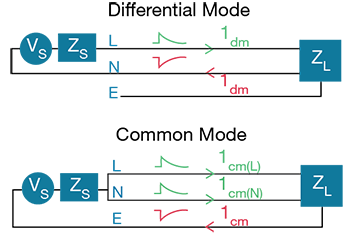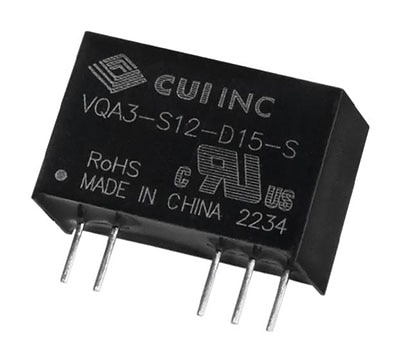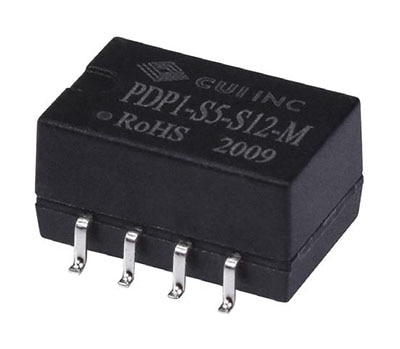An isolated DC-DC converter can be an effective solution for eliminating unwanted noise in audio applications.
What causes Noise in Audio Devices?
In audio applications, noise can be a serious problem that can severely degrade the quality of a sound signal. Noise can manifest in many forms, including hum, hiss, and distortion. Hum is a low-frequency noise that is often caused by electromagnetic interference (EMI), while hiss is a high-frequency noise that is usually generated by electronic components or other electrical sources. Distortion, on the other hand, is caused by various factors such as clipping, saturation, or frequency response anomalies in the audio signal path. This article explores common mode noise, another common type of noise that can be characterized as hum or buzzing.
While hum, hiss, and buzz might seem like minor irritations, they can actually have a significant impact on the quality of an audio signal. Hum and hiss can make a recording sound muddy or unclear, while distortion can introduce unwanted harmonics that can ruin the overall quality of a sound.
What is Common Mode Noise?
Common mode noise occurs when there is a noise signal that is present on both the signal and ground conductors of an audio cable, rather than just the signal conductor alone (differential mode noise). This noise can result in an audible hum or buzzing sound in the audio signal. Common mode noise may also change in intensity or frequency depending on the location or orientation of the audio cables, or when other electrical devices are turned on or off in the vicinity.

Figure 1: Differential Mode Noise vs. Common Mode Noise
Source: CUI
Common mode noise can be caused by a variety of factors, including EMI from nearby electrical devices, ground loop problems in the audio system, or improperly shielded or grounded audio cables. In some cases, a component or circuit in the audio system itself can be a source of noise, such as a switched-mode power supply (SMPS), which are very common in audio devices.
Why does an SMPS generate Common Mode Noise?
An SMPS is a type of power supply that uses a switching regulator to convert electrical power from one form to another. An SMPS works in the following manner:
- AC-to-DC conversion: The SMPS starts by converting the AC voltage from the wall outlet into DC voltage, typically through a rectifier circuit.
- Filtering: The DC voltage is filtered to smooth out any voltage ripples or noise.
- Power switching: The filtered DC voltage is then fed into a power switching stage, which consists of a power transistor or a group of transistors that are rapidly turned on and off by a control circuit.
- Inductor and capacitor: The power switching stage drives an inductor that stores energy in a magnetic field, and a capacitor that stores energy in an electric field. These two components work together to maintain a stable output voltage.
- Output regulation: The output voltage is then regulated to ensure that it remains constant, despite variations in the input voltage or load.
- Feedback control: The output voltage is monitored by a feedback circuit, which adjusts the power switching stage to maintain a stable output voltage.
Switched-mode power supplies are commonly used in audio devices, due to their compact size, high efficiency, and ability to handle a wide range of input voltages; however, an SMPS can also be a significant source of common mode noise in audio systems.
SMPS generate common mode noise because they switch on and off at high frequencies (typically several tens to hundreds of kilohertz). These switching frequencies can create EMI that can couple into nearby audio cables or devices. This EMI can cause current to be pumped through stray capacitances in the circuit, such as those between the input and output of the SMPS or between the local ground and power return. This current flow can cause the connection to jump in voltage due to its self-impedance, resulting in common mode noise.

Figure 2: Common mode noise cause by stray capacitances
Source: CUI
Figure 2 illustrates the circuit of a typical switching power supply, where stray capacitance could cause common mode noise. Q1 represents the switching transistor, which rapidly switches from 0V to several hundred volts. C1 is the potential stray capacitance generated by this switching. C1 is coupled into the heatsink and because heatsinks are often grounded, this stray capacitance causes common mode noise in the ground. C2 also represents stray capacitance, which can potentially allow pulses of current into the secondary circuit, despite transformer isolation.
Reducing Common Mode Noise
Steps can be taken to mitigate any current caused by leakage capacitances. A grounded screen can be added to the SMPS transformer, blocking any coupling; however, size and safety requirements can make this physically impractical. Common mode chokes are often used, but they can cause other problems, such as degrading regulation. Adding spacing to minimize the transformer interwinding capacitance is an effective solution; however, this could add leakage inductance, which reduces efficiency and increases stress on components.
DC-DC Converters
Shop our wide variety of DC-DC Converters by CUI Inc.
Don't forget to join our discussion.
An elegant solution to reducing this capacitance is the use of a separate, isolated DC-DC converter. The larger the power supply, the greater the potential leakage capacitance, often in the range of hundreds of pF. This solution involves using a separate, isolated DC-DC converter to power the sensitive analog audio stage, which has relatively small power requirements. Typical power requirements for the audio stage might be around 1W at ±9V. Coupling capacitance at these levels would be very low (around 6.6pF), reducing common mode current to a very low level.
The isolation of the DC-DC converter means that there is no direct electrical connection between the power supply and the audio stage, which eliminates the effects of leakage capacitance. Additionally, the use of a low-capacitance DC-DC converter reduces the amount of high-frequency noise that can be coupled into the audio signal, further improving the quality of the audio.
This approach can be particularly effective in high-end audio systems, where even small amounts of noise or distortion can be noticeable. By using a separate, isolated DC-DC converter with low coupling capacitance, designers can help to ensure that the audio signal is as clean and accurate as possible.
DC-DC Converters from CUI
While the original intended application for CUI’s VQA Series of DC-DC converters is to power IGBT gate drivers, some models have specifications that are suitable for audio applications. When powering IGBT gate drivers, low capacitance is needed to give immunity to the high dV/dt levels in high-side drives, a characteristic that benefits audio as well.

Figure 3: CUI VQA Series DC-DC Converter
Many of CUI’s smaller isolated DC-DC converters can also be used for powering audio applications, with coupling capacitance significantly lower than that of a typical AC-DC power supply.

Figure 4: PDP1-M Series DC-DC Converter
For more information, check out our DC-DC Converters eBook.
Other Ways to Reduce Noise
Of course, there are so many different causes for noise, eliminating it can be a frustrating experience. These are some steps that can help to achieve the cleanest audio quality:
- Use shielded or balanced audio cables: Shielded cables are designed to reduce electromagnetic interference (EMI) from nearby electrical devices, while balanced cables help to reduce noise by canceling out common mode noise. Using high-quality, shielded, or balanced cables can be an effective way to reduce noise.
- Implement proper grounding techniques: Proper grounding of audio equipment is essential to reducing common mode noise. Make sure that all audio equipment is properly grounded, and avoid creating ground loops, which can occur when there are multiple ground connections, creating a potential difference between them that can cause unwanted noise.
- Use isolation transformers: Isolation transformers can help to eliminate common mode noise by breaking the ground loop between devices. This can be particularly useful in situations where ground loops are a persistent problem.
- Add EMI filtering components: Adding EMI filtering components, such as ferrite chokes or EMI filters, can help to reduce electromagnetic interference that can cause common mode noise.
- Check for faulty components: In some cases, common mode noise is caused by a faulty component or circuit in the audio system. Checking for and replacing any faulty components can help to eliminate the noise.
Summing Up: A Solution for Noise in Audio Applications
in partnership with

Noise can be a significant issue in audio applications, with common mode noise caused by leakage capacitance in a switched-mode power supply (SMPS) being a particularly problematic source. This type of noise can be generated by rapid voltage changes at switching nodes, which can pump current through stray capacitances into the local input and/or output ground or power return, resulting in noise and distortion in the audio signal. One potential solution is the use of a separate, isolated DC-DC converter with low coupling capacitance to power the sensitive analog audio stage, which can help to eliminate the effects of leakage capacitance and reduce the amount of noise and distortion in the audio signal. Several of the small DC-DC converters in the CUI portfolio fit these requirements and could be effective solutions to noise problems in audio circuits.
Where has noise been an issue for you and how were you able to fix it?
Please tell us in the Comments section below.
